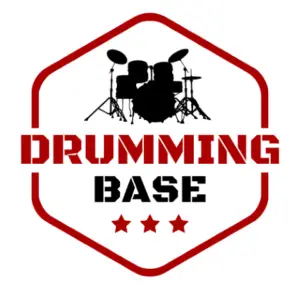The spring tension on a bass drum pedal affects how the drum feels and sounds. In this article I’ll explain the pros and cons of high vs low tension, and how to adjust the spring tension to suit you.
Increasing the bass pedal spring tension will cause the pedal to rebound more quickly, however it makes it harder to control and will require more effort to use. Lower spring tension is better for playing double bass and using techniques which require more precision and control.
Low vs High Spring Tension
The tighter the spring tension is on the bass drum pedal, the more springy the pedal will feel. In other words, the pedal will be harder to press, but will have more rebound.
However, having high spring tension is not great if you need more control or need to feather the bass drum. It can be hard work to control because you’ll need to effectively control the level of rebound on the pedal with your foot.
The advantages of using a bass pedal with low spring tension are that it easier to control and play quietly. Lower tension = less rebound, as there’s not as much energy in the pedal to tame.
A lower tension is often preferred for metal and playing double bass even though you’d need to play fast. This is because the added control is more beneficial in these situations.
| High Tension | Low Tension |
| Has a springy feel | Better for playing slow |
| Produces a higher volume | Better for quieter volumes |
| Hard to control the rebound | Easy to control |
| Increased foot fatigue | Less foot fatigue |

How to Adjust the Spring Tension
How to increase the bass pedal spring tension:
- Loosen the nut on the top
- Push the top nut down to stretch the spring out
- Tighten the screw on the bottom to lock it in place

How to lower the bass pedal spring tension:
- Loosen the nut on the top
- Pull the top nut down to compress the spring
- Tighten the screw on the bottom to lock it in place

How Tight Should the Pedal Be?
Okay so now we know how to adjust the tension, and the pros and cons of high and low tension, how do you dial in the right settings on your bass pedal?
It’s very much a personal preference, some drummers like to have a super high tension whereas others will prefer there to be barely any tension at all.
Consider the answers to the following questions.
- Do you like to have lots of control? This is where a low tension is better
- How long is your beater length? A longer beater generally suits a higher tension, whereas a shorter beater typically works best with lower tension
- Are you playing heel up or down? Heel up works better with high tension compared to heel down
I’d recommend adjusting your bass pedal spring tension and trying the extremes. Practice with both max and minimum tension and you’ll get an idea of how they feel and what they excel at. You’re likely to get a preference for either the highest or the lowest tension.
Once you’ve tried the extremes, adjust the bass pedal spring tension to medium. Then from there, you can adjust up or down based on your findings when trying the extremes. Experimentation is key, spend some time playing about with different tensions until you find the sweet spot.
Here are more articles you might find useful:

